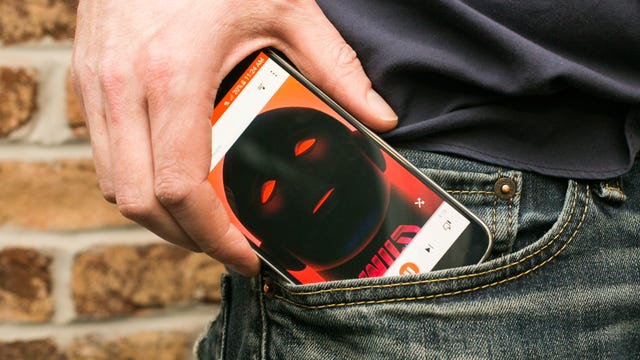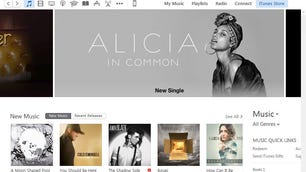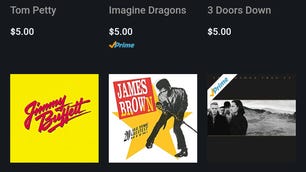Apple Music and Spotify are the two biggest names in music streaming. They basically have the same monthly subscription fee, so it can be tricky to know which one best suits your needs. Do you want lossless and spatial audio support? Apple Music is the one. Love podcasts, audiobooks and making playlists? Spotify is your jam.
Part of the choice also comes down to how you listen. If you’re enjoying music at home, then smart speaker support is key, but music discovery and stream quality can be as important (if not more so) for keen music lovers. Let’s dive in.
Read more: Best Music Streaming Service of 2024
Spotify vs. Apple Music
| Spotify | Apple Music | |
|---|---|---|
| Price | $11 a month ($6 for students) | $10 a month ($6 for students) |
| Family plan | Yes, up to 6 people ($17) | Yes, up to 6 people ($17) |
| Free tier | Yes, ad-supported | No, only Beats1 radio |
| Free trial | 3 months | 1 month |
| Stream quality | Depends on platform: 256Kbps AAC (Premium) or 128Kbps AAC (free) on web player; up to 320Kbps (Premium) or 160Kbps (free) on desktop, mobile and tablet. | Lossless audio and Dolby Atmos spatial audio from June 2021, 256Kbps AAC |
| Music library | Over 100 million songs, 2.6 million podcasts | Over 100 million songs |
Apple Music and Spotify cost the same (mostly)
Both Spotify and Apple Music offer a free three-month trial period for their premium services, which normally cost $11 monthly ( 11 for either service in the UK; in Australia Spotify runs AU$14 while Apple Music is AU$13). Each costs $6 for students or $17 for a six-user family plan. You can stream any song from the catalog on demand, plus listen to songs offline.
Spotify is offering three months of its premium version free to new users, while Apple Music is offering one free month for new users.
Alongside Amazon Music and Pandora, Spotify is the only one of the few music services with a free, ad-supported tier, so even if you don’t want to pay for the premium version, you can still listen. The caveat (aside from the interruptions) is that many albums and playlists require you to listen in shuffle mode rather than sequential play, and there’s a limit of six skips per hour.
Apple Music lets free users stream Beats1 Radio, or you can listen to songs from your iTunes library.
Spotify also offers a Premium Duo subscription for two users who live at the same address for $13 ( 13, AU$16). And if you’re a student, you’ll get access to Hulu and Showtime (ad-supported) as part of your Premium subscription.
Winner: Spotify
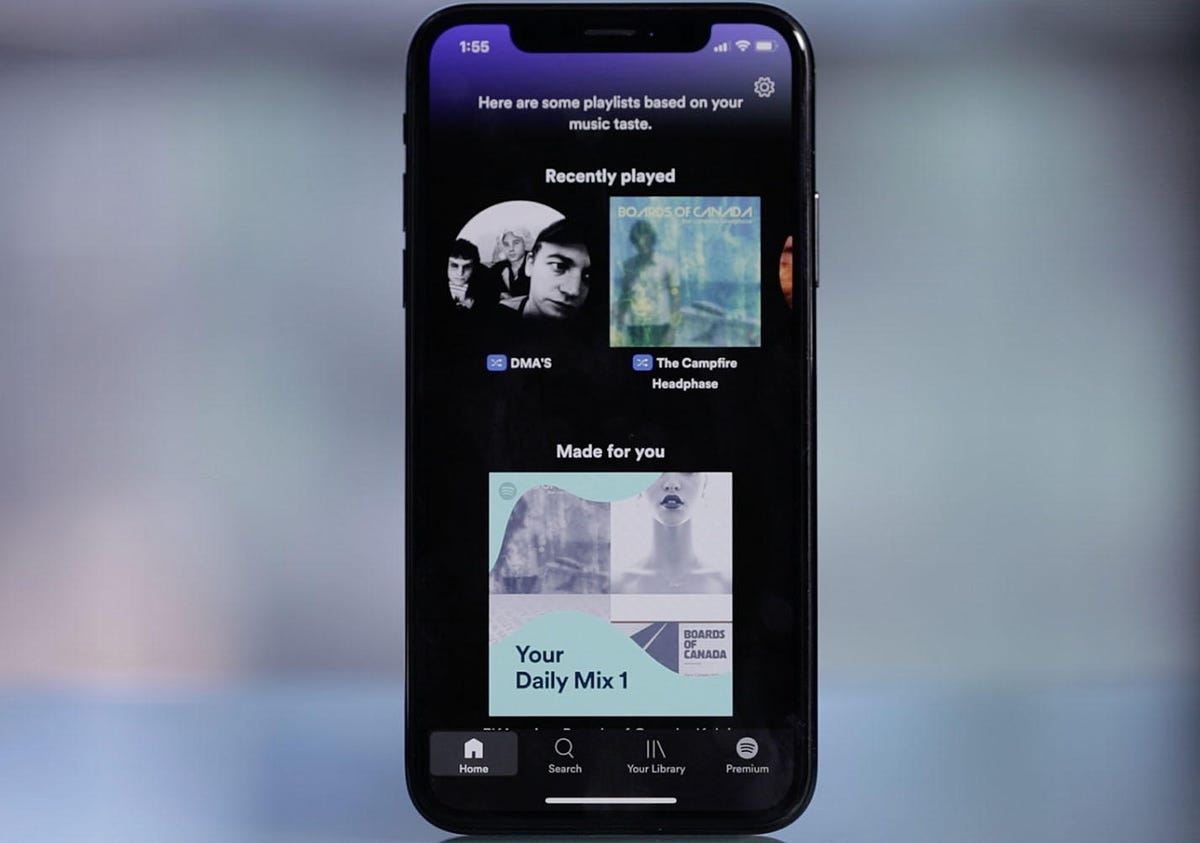
Does Apple Music or Spotify have better streaming quality?
Spotify uses the Ogg Vorbis format or AAC. On mobile you can choose what bit rate to stream, in set increments up to 320Kbps, which is handy especially if you’re worried about using up too much mobile data. If you listen on Spotify’s web player, it streams in AAC at 128Kbps for free users or 256Kbps for premium.
Apple Music now streams its catalog in lossless quality, plus it offers spatial audio on select songs. Users will need to opt-in to lossless audio by going to Settings, then Music, then Audio Quality on the iPhone. Spotify is expected to debut its long-awaited HiFi subscription for lossless audio sometime in the near future. To find out more about bit rate and audio quality, read this in-depth comparison of sound quality between Apple Music and Spotify.
You can also adjust the equalizer in both to suit your preferences, although you’ll find Apple Music’s EQ outside of the app in the Settings app.
Winner: Apple Music
Spotify has podcasts and audiobooks
Both Spotify and Apple Music claim access to over 100 million albums. Both offer early access to certain albums from time to time and Apple Music sometimes offers exclusives for certain music videos.
If you turn on iCloud Music Library within Apple Music, you can access your personal library of tunes across all your devices (from the PC to the phone). This feature “matches” songs in your library with those in the iTunes catalog, or uploads them if the song isn’t available, so you can listen to your music wherever you’re signed in with your Apple ID. You can store up to 100,000 songs. Note that iTunes Match is also available even without an Apple Music subscription for $25 a year, though it’s only really necessary if you own a non-4K Apple TV.
Spotify also lets you play music stored on your device in the Spotify app, but it only works for local files (so they aren’t backed up in the cloud).
Lastly, Spotify is the only service that offers both podcasts and up to 15 hours of audiobooks within the app. Meanwhile, Apple splits podcasts into a dedicated Podcasts app.
Winner: Spotify
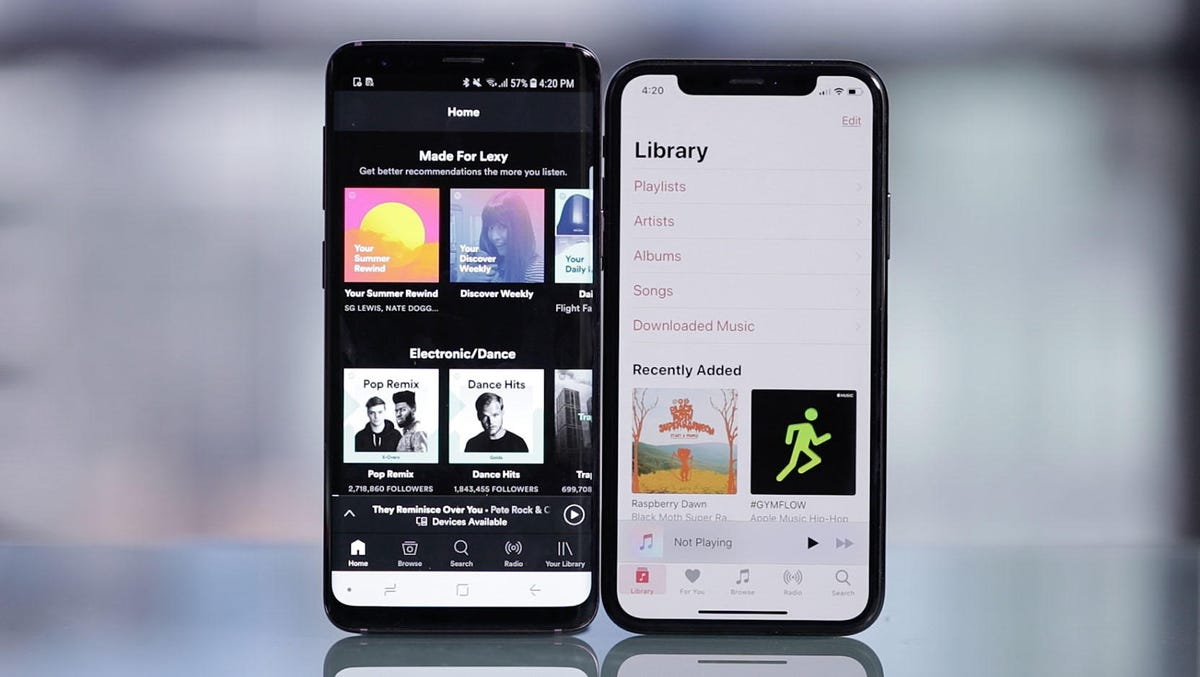
Is Apple Music or Spotify easier to use?
Apple Music features a clean white look on mobile, while Spotify paints it black across its apps. (Activate dark mode on iOS and Apple Music will switch, too.) Both apps are pretty easy to navigate, with the main tabs (Radio, Search, Your library and so on) found at the bottom of the interface.
Both let you look at lyrics on screen if they’re available for particular songs. But only Apple Music lets you search by typing a stream of lyrics to find songs you don’t know the name of, in addition to including a karaoke mode.
Google Maps lets you listen to and control Spotify or Apple Music playback within the navigation interface in iOS and Android. Waze also offers a similar feature for Spotify users.
On top of CarPlay support, Apple Music for Android works with Android Auto, so you can control playback through the infotainment system.
Winner: Draw
Spotify lets you listen in more places, Apple Music is best for Siri
Both Apple Music and Spotify are available on iOS and Android. Both have desktop apps for Windows and Mac, so you aren’t limited to listening on mobile.
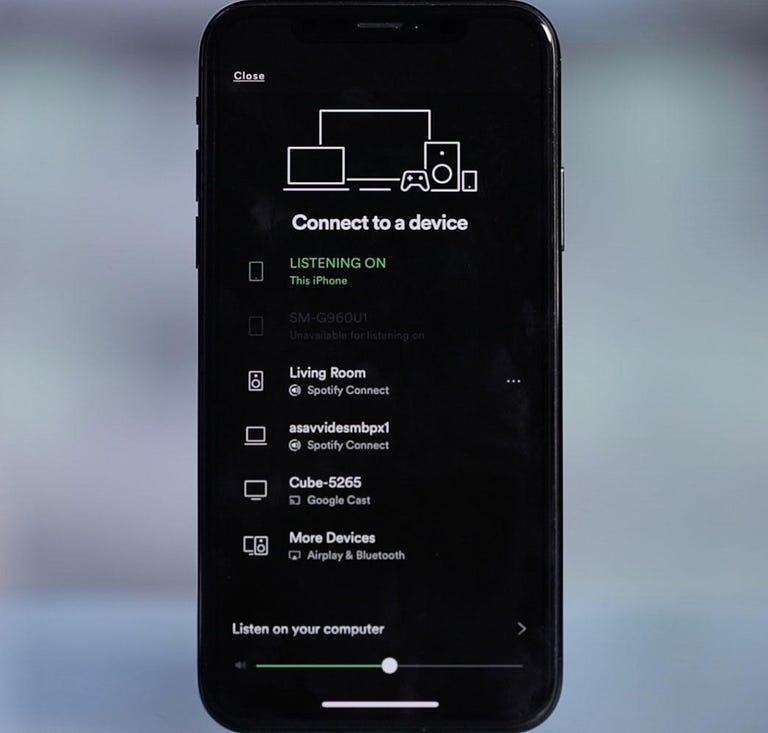
You can also listen to music in your browser: Spotify is at open.spotify.com and Apple Music is at music.apple.com.
And you can also stream any audio to a Bluetooth wireless speaker, to an AirPlay speaker from an iOS device, or to a Chromecast speaker from an Android device (you can also cast from iOS if you have Spotify).
When it comes to smart speakers, Apple Music with Siri voice control on Apple’s HomePod and is now compatible with Amazon’s full line of Echo smart speakers via the Alexa App (US only). It’s also available on other Apple and Amazon devices like the Apple Watch, Apple TV and FireTV.
In addition to Amazon Alexa speakers, Spotify is also available on Google smart speakers. And if a device is certified as Spotify Connect compatible, it means you can use the Spotify app as a remote to control playback. Spotify is also available across a wide range of other devices like Xbox and PlayStation.
Winner: Spotify
Music discovery tools excel on Spotify and Apple Music
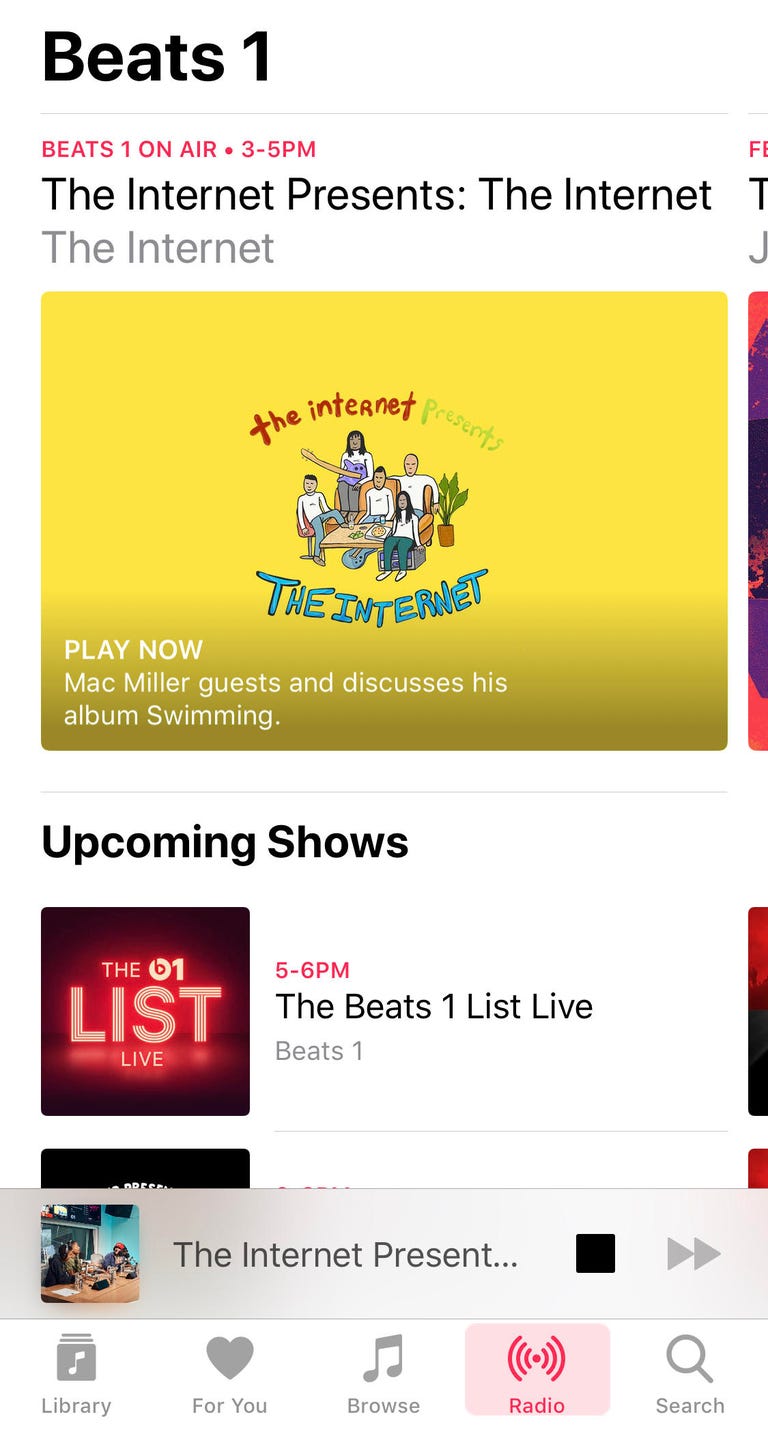
One of the top reasons to use a streaming service is to discover new music. Both Spotify and Apple Music expose you to new tunes based on what you already like.
Spotify has tailored playlists like Discover Weekly and Release Radar that are automatically populated each week with new songs. Apple Music has similar playlists, including New Music Mix.
When you first sign up for each service, both ask you for your favorite genres and artists to get a baseline reading. Once you start listening more, each gets a clearer picture of your likes and dislikes to help tailor recommendations even further.
Spotify and Apple Music also have radio stations based around your favorite artists, tracks or genres. Apple Music also has a separate station called Beats1 Radio which is curated and hosted by actual DJs, so you can listen to it in real time like you would a traditional radio station.
In our experience, Spotify’s algorithmic recommendations for new music based on our listening habits is the most on-point. It also has an AI DJ. But Apple Music’s human-curated radio station often uncovers new or unreleased tracks that also appeal.
Winner: Spotify for playlists, Apple Music for radio lovers
Social integration
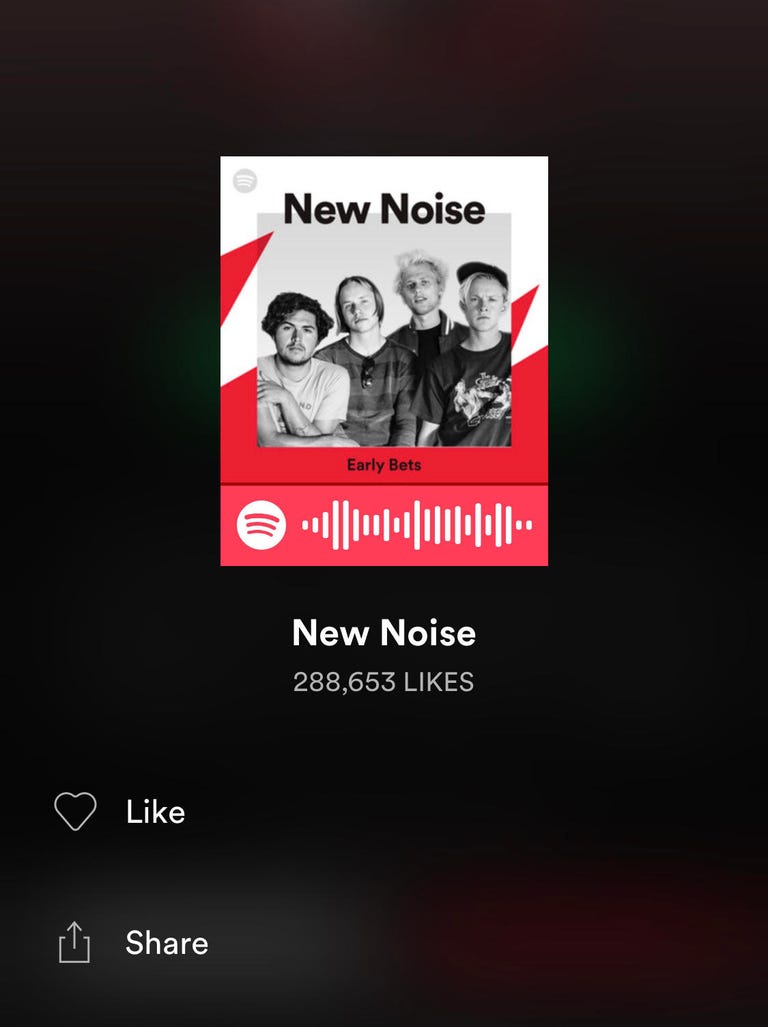
Both services let you follow your favorite artists to keep up to date with their latest releases.
You can also follow friends. On Spotify, you can see what song your pals are listening to in real-time (if they choose to share this detail) on the desktop app.
Spotify Codes are a way to share tracks, albums and playlists among friends. It’s kind of like a custom QR code that you can scan with the camera in Spotify if you’re listening in the same location, or share through messages if you’re apart.
Naturally, you can also follow your friends and see what they’re up to across both platforms. While it’s much easier to set up and find profiles on Apple Music than it is on Spotify, your friends need to appear in your contacts list (or on Facebook) in order to follow them.
Spotify has the real-time Jam feature which lets two or more Premium subscribers control music playback and collaborate on a shared playlist.
Winner: Spotify
Is Apple Music or Spotify right for you?
If you simply want a free service, Spotify is the clear winner. But if you are looking to pay for music service, your decision may be a little more involved.
Apple Music plays well with other Apple devices. If you want voice control on the HomePod, for example, Apple Music is your only option. Spotify, on the other hand, has greater cross-compatibility across lots of different devices, from game consoles to smart speakers.
It takes time to train each of these services to really get to know your taste. For our money, Spotify does a better job in uncovering and tailoring playlists and recommendations to us through its custom playlists and discovery features. But Apple Music gives you the most flexibility in mixing songs from your own library (that might not even be on streaming services) with new tunes you can stream on demand.
Of course, Spotify and Apple Music aren’t your only options for streaming music services. To see how they stack up against competitors like Tidal and Amazon, click here to read our comparison.

